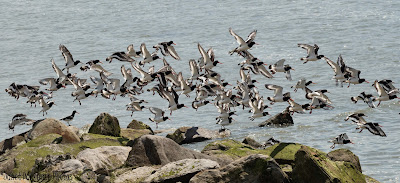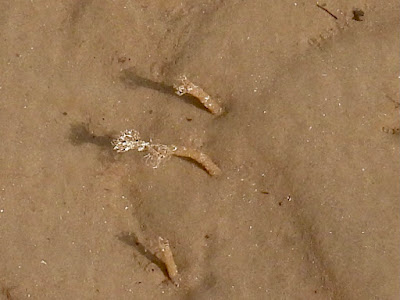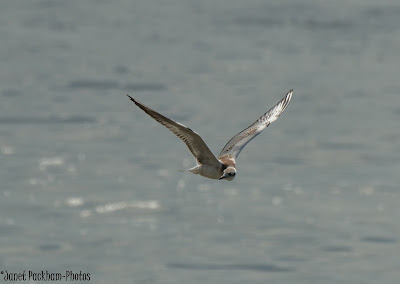Showers all day particularly in the morning. A light east wind.
South shore
Report from Shaun Coyle:
Red Nab to Heysham Harbour 11:00 to 13:00.
Mediterranean Gull 22 (adult 13, 2nd summer 6 and 3 1st summer).
First summer Kittiwake harbour entrance area.
Common Tern adult followed the Steam Packet ferry in, then headed off towards the outfalls.
Peregrine Falcon 2 spooking the gulls
I had a stroll in the rain (Malcolm)
When I reached the beach by the wooden jetty there were only six resting Meds, then the beach was cleared by the Peregrines. I took these shots on the skear yesterday, but they are pertinent to the beach by the jetty.
 |
| This is what they were feeding on. Tiny fry (this year's hatchings) |
Grey Seal 1 - This is interesting and I can't pretend to completely understand it. The seal was dozing and happily drifting along, but close by small fish kept leaping out of the water. There are six in this short compilation.
Fish will only leap like this if they are chasing food or being chased for food. I suspect the latter. The seal is likely attracting small creatures, perhaps the tiny fry. These will attract larger fish, the size jumping out of the water, and of course these attract big fish that then cause them to leap clear. The details are just speculation of course, but it will be a scenario similar to this. The sleeping seal is basically the centre of a temporary ecosystem.
Redshank 23 (8 and 15)
Rock Pipit 1 along the sea wall
This young Blue Tit seemed to be finding plenty to eat on the newt pond in the Nature Park
 |
| Juvenile Black-Headed gull |
 |
| Oystercatchers |
 |
| Pied Wagtail on Red Nab |
 |
| Common Darter in the Nature Park |
 |
| Six-spot Burnet near the lighthouse |
 |
| House Sparrows at the heliport |





